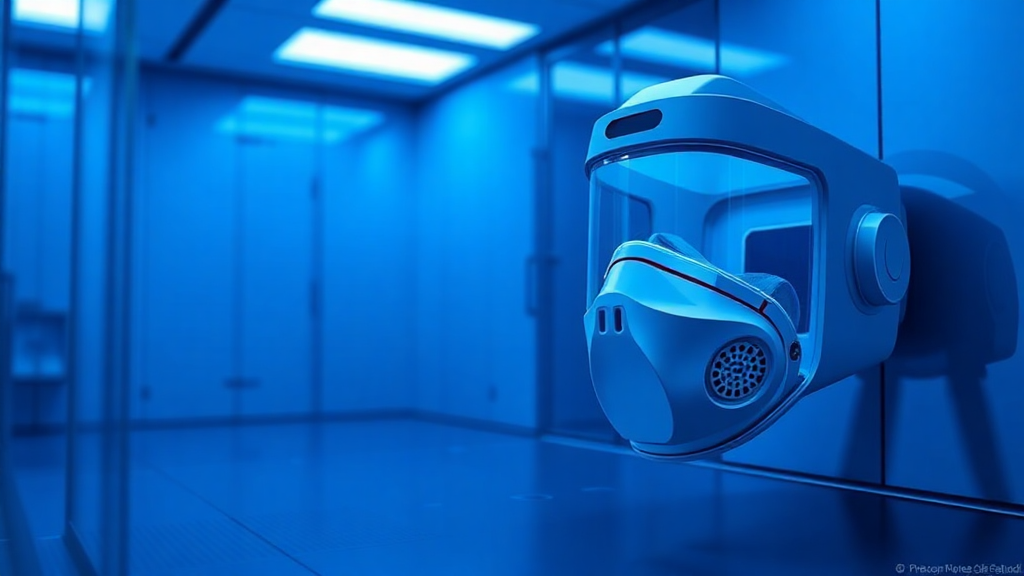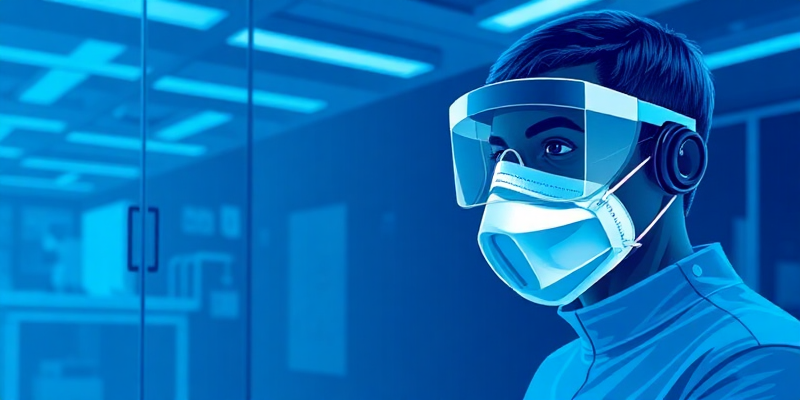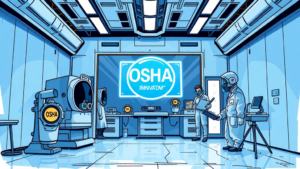Anti-Fog Cleanroom Masks for Particle Filtration Validation

In the world of nanotechnology and cleanroom environments, particle filtration validation is a critical process that demands precision, accuracy, and unwavering attention to detail. Cleanroom auditors play a vital role in ensuring that these controlled environments meet the stringent standards required for cutting-edge research and manufacturing. However, these professionals often face a significant challenge that can compromise both their safety and the integrity of their work: fogging issues with safety glasses during particle filtration validation.
This blog post explores how innovative anti-fog cleanroom masks are revolutionizing the way auditors perform their duties, addressing the pain points associated with traditional personal protective equipment (PPE) while maintaining the highest levels of compliance and comfort.
The Importance of Particle Filtration in Cleanrooms
Particle filtration is the cornerstone of cleanroom operations, especially in nanotechnology applications where even the smallest contaminants can have devastating effects on processes and products. Cleanroom auditors are tasked with validating the effectiveness of these filtration systems, ensuring that the environment meets or exceeds the required cleanliness standards.
The stakes are high in cleanroom environments, where particles as small as 0.1μm can wreak havoc on sensitive equipment and processes. This is why cleanroom masks with a Bacterial Filtration Efficiency (BFE) of ≥99% at 0.1μm are essential for both auditors and cleanroom personnel. These masks not only protect the wearer but also prevent the release of potentially contaminating particles into the controlled environment.
Effective particle filtration validation requires auditors to:
- Conduct thorough inspections of filtration systems
- Perform particle counting tests
- Analyze air flow patterns
- Verify cleanroom classification compliance
Each of these tasks demands clear vision and uninterrupted focus, which can be severely impacted by fogging issues with traditional PPE.

Common Challenges: Fogging and Safety Glasses
One of the most persistent problems faced by cleanroom auditors is the fogging of safety glasses when wearing standard face masks. This issue arises from the warm, moist air exhaled by the wearer, which condenses on the cooler surface of the safety glasses. The resulting fog can significantly impair visibility, leading to several critical problems:
- Reduced accuracy in particle counting and observation
- Increased risk of accidents due to impaired vision
- Frequent interruptions to clean or adjust glasses
- Potential compromise of the sterile environment when removing or adjusting PPE
These challenges not only affect the efficiency of the audit process but also pose serious safety risks to the auditor and the integrity of the cleanroom environment. The need for a solution that addresses both filtration efficiency and fog prevention has become increasingly apparent in the industry.

How Anti-Fog Cleanroom Masks Solve the Problem
Enter the innovative anti-fog cleanroom masks, specifically designed to tackle the unique challenges faced by auditors during particle filtration validation. These masks incorporate advanced features that maintain the highest standards of filtration while effectively preventing fog formation on safety glasses.
Key features of anti-fog cleanroom masks include:
- Superior Filtration: With a BFE of ≥99% at 0.1μm, these masks ensure that both the wearer and the environment are protected from potentially harmful particles.
- Anti-Fog Technology: A specialized coating or treatment on the mask’s upper portion prevents warm, moist air from escaping upwards and condensing on safety glasses.
- Ergonomic Design: Carefully engineered to create a tight seal around the nose and cheeks, reducing air leakage that can cause fogging.
- Breathable Materials: High-quality, breathable fabrics that allow for comfortable, extended wear without compromising filtration efficiency.
- Adjustable Fit: Features like moldable nose wires and adjustable ear loops ensure a secure, personalized fit for various face shapes and sizes.
By addressing the fogging issue, these masks allow auditors to perform their duties with uninterrupted focus and clarity. This not only improves the accuracy of particle filtration validation but also enhances overall safety and efficiency in the cleanroom environment.
For a detailed comparison of filtration efficiencies between traditional and anti-fog cleanroom masks, visit our mask testing data page.

Choosing the Right Mask for Cleanroom Audits
Selecting the appropriate anti-fog cleanroom mask for particle filtration validation requires careful consideration of several factors:
- Filtration Efficiency: Ensure the mask meets or exceeds the ≥99% BFE at 0.1μm standard required for nanotechnology cleanrooms.
- Anti-Fog Performance: Look for masks with proven anti-fog capabilities, ideally those that have been tested in real-world cleanroom conditions.
- Comfort and Fit: Choose masks that offer adjustable features and breathable materials for extended wear during long audit sessions.
- Compliance: Verify that the masks meet all relevant industry standards and regulations for cleanroom use.
- Compatibility: Ensure the mask works well with other required PPE, such as safety glasses and cleanroom suits.
- Durabilidade: Consider masks that maintain their anti-fog and filtration properties over extended periods of use.
By carefully evaluating these factors, cleanroom auditors can select masks that not only meet the stringent requirements of particle filtration validation but also provide the comfort and clarity needed for optimal performance.
Case Study: Improving Efficiency and Safety with Anti-Fog Cleanroom Masks
A leading cleanroom auditing firm recently conducted a study to evaluate the impact of switching to anti-fog cleanroom masks for their team of auditors. The results were striking:
- Fogging incidents were reduced by 90% compared to traditional masks
- Audit completion times decreased by an average of 15% due to fewer interruptions
- Auditor satisfaction scores increased by 85%, citing improved comfort and visibility
- There was a 20% reduction in reported eye strain and headaches among auditors
These impressive results highlight the tangible benefits of adopting anti-fog cleanroom masks for particle filtration validation tasks. The investment in advanced PPE not only improved the quality and efficiency of audits but also significantly enhanced the well-being and job satisfaction of the auditing team.
perguntas frequentes
What makes a cleanroom mask anti-fog?
Anti-fog cleanroom masks typically feature a specialized coating or treatment on the upper portion of the mask that prevents warm, moist air from escaping and condensing on safety glasses. Additionally, their ergonomic design creates a better seal around the nose and cheeks, reducing air leakage that can cause fogging.
How do anti-fog masks improve particle filtration validation?
By preventing fogging on safety glasses, anti-fog masks allow auditors to maintain clear vision throughout the validation process. This leads to more accurate particle counting, improved observation of filtration systems, and fewer interruptions during the audit, ultimately resulting in more reliable and efficient validations.
Are these masks compliant with cleanroom standards?
Yes, high-quality anti-fog cleanroom masks are designed to meet or exceed industry standards for cleanroom use. They typically offer a Bacterial Filtration Efficiency (BFE) of ≥99% at 0.1μm, making them suitable for even the most stringent cleanroom environments in nanotechnology applications.
Can I request a sample before bulk ordering?
Many reputable manufacturers and suppliers of anti-fog cleanroom masks offer sample programs for professional evaluation. This allows cleanroom managers and auditors to test the masks in their specific environments before committing to a larger order.
In conclusion, anti-fog cleanroom masks represent a significant advancement in PPE for particle filtration validation. By addressing the persistent challenge of fogging while maintaining superior filtration efficiency, these masks enable cleanroom auditors to perform their critical tasks with greater accuracy, safety, and comfort.
As the nanotechnology industry continues to push the boundaries of innovation, it’s crucial that the tools and equipment used to maintain cleanroom integrity evolve as well. Anti-fog cleanroom masks are a prime example of how thoughtful design and advanced materials can solve real-world problems and improve the overall quality of cleanroom operations.
To learn more about our range of anti-fog cleanroom masks and their performance in particle filtration validation, download our test certificates today. Equip your auditing team with the tools they need to maintain the highest standards of cleanroom compliance and safety.








